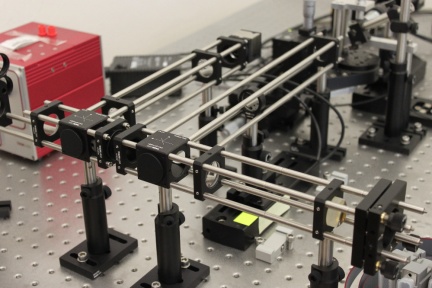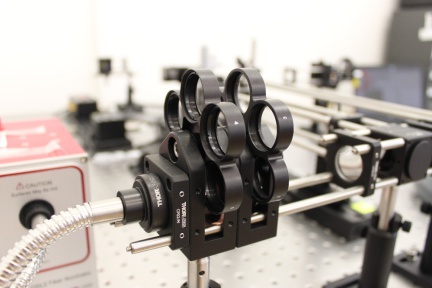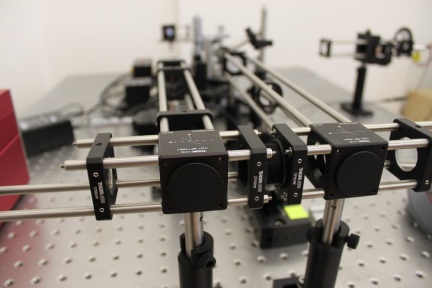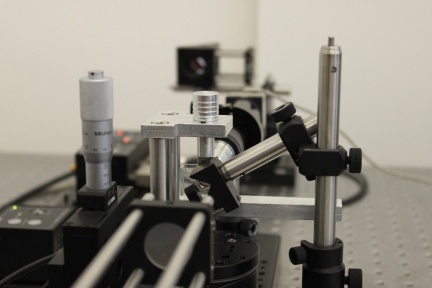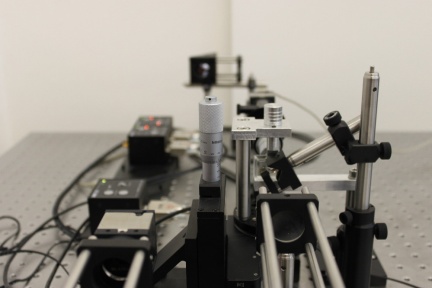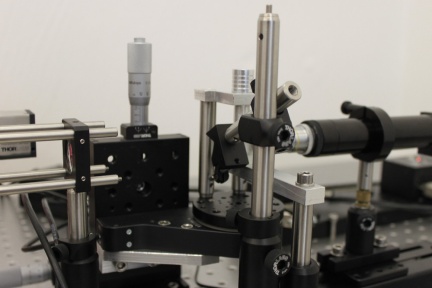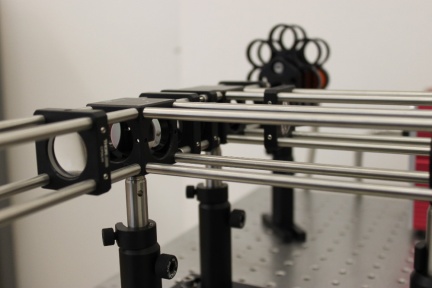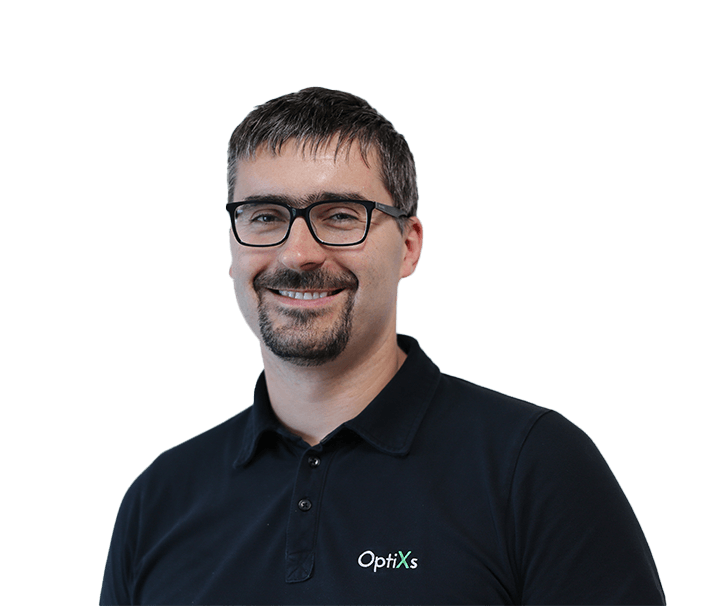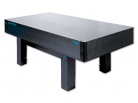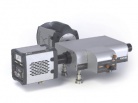For a commercial customer, we built an optical bench for measuring the optical properties of intraocular lenses. Adaptive optics is integrated into the system to simulate various optical aberrations and thus facilitate the development of new lenses. We worked with our partner company Elya Solutions for the implementation.
The assembly consists of two complementary modular parts.
The first consists of a bench for measuring the optical properties of intraocular lenses using the Badal principle. Here, a test pattern is selected on the input, including a colour filter. This is projected from a defined distance onto a model of the eye in which the intraocular lens to be tested is placed using a collimating lens, an auxiliary lens and a Badal lens. The image formed behind the eye is then imaged using a microscope objective and a CCD camera. The bench allows the measurement of a given lens over a defined range of object distances and the processing of curves of the dependence of image quality on object distance.
The second part of the optical system is adaptive optics, or a deformable mirror, which can be used to identify residual defects in the image or to simulate defects, aberrations, intraocular lens imaging and, if necessary, to correct them. For this purpose, a modified first part of the system is used, where the wavefront created by the laser beam is used to calibrate the settings of the deformable mirror using the control electronics and the wavefront sensor. After switching off the laser, it is possible to obtain both an improved image of the original test pattern and to quantify residual defects from the knowledge of the mirror deformation.
The control and evaluation software from Elya Solutions is also included.
Components:
- TMC pneumatic self-levelling optical table
- Thorlabsdeformable mirror
- Eye model chamber for intraocular lens application Elya Solutions
- ThorlabsOptics and Optomechanics
